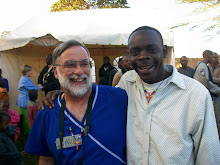HDR photography explanation:
There are about a dozen HDR landscapes sprinkled throughout the photos. These are composites that I made out of three pictures each. This is a fairly new form of photography, unique to digital photography, not used during the days of film. It is a new art form. The HDR stands for High Dynamic Range. In plain English, the human eye and brain are a miracle of God. They can average out the various contrasting parts of a scene hundreds of times a second. A camera is stuck with one setting for a fraction of a second. Consider a beautiful landscape with awesome clouds as a backdrop. If the foreground is properly exposed, the brighter clouds will be overexposed (blown out) and will just appear to be a bright white sky with no detail. If the camera is adjusted to get a great picture of the sky, the foreground will be underexposed, so dark that no terrestrial detail is seen. Exposure bracketing done with my Nikon D5200 and some computer tricks overcome this technical problem. In brief, each of the HDR pictures I produced for this project consists of three shots. They were taken rapid fire by hand and, thanks to the magic of vibration reduction technology in my Nikon lenses, they actually are pretty good. This type of photo is usually done with a tripod and, when possible, I even use a wireless shutter release to minimize any shaking that might be induced by even touching the camera to trip the shutter. For those who care, one photo is underexposed by 2 stops, one is right on the money and one is overexposed by 2 stops. They were joined together into composites in Photomatix Pro, a $100 software package most professionals use. Final tweaking was done in Adobe Lightroom 5, another staple of the pros. Many of the stunning photos you see in magazines or online these days were produced using these methods. On some pictures, I went for maximum realism, on some of the others I made them a little more stunning or surreal. I hope you like them. They are identified as HDR in the captions.
This photo project is still a work in progress. I will be revising captions as I identify more species names, both human and animal! A few more pictures may be added as time goes by.
Finally, I always write a summary of each trip, with a few photos in the body of the article and some reflections on what stood out for myself and the team, especially the places where we saw the hand of God moving in our lives through the experiences on the trip. Stay tuned....

No comments:
Post a Comment